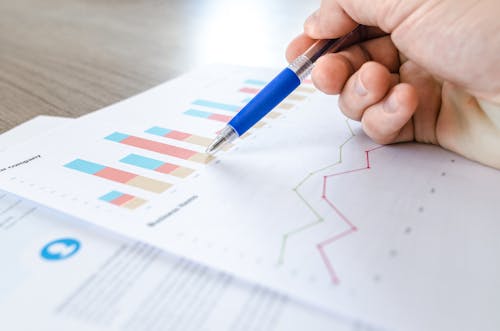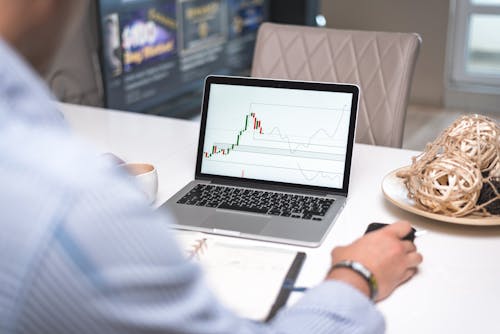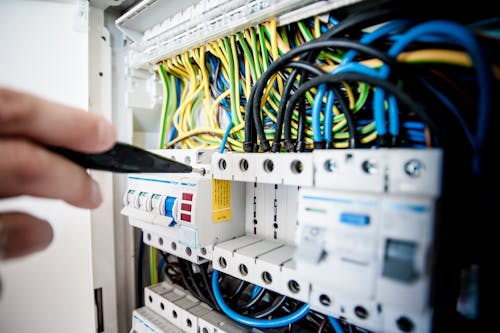Cloud computing is a software architecture built on applications that save data on remote servers that can be accessed via the internet. The front-end and back-end of cloud computing can be separated to better understand how it works. A user can use an internet browser or cloud computing software to access data stored in the cloud via the front end. The backend, on the other hand, is the most important part of cloud computing, since it is responsible for securely storing data and information. Servers, computers, databases, and central servers are all part of it. Explain how cloud computing has changed and how data is processed?

Cloud computing has become the hottest topic in technology today, because of marketing and services provided by major corporations such as Google, IBM, and Amazon. Cloud computing is the next step in the Internet’s evolution. Though “Cloud Computing” may seem important to some, it is not. In actuality, cloud computing is something we’ve been using for a long time; it’s the internet facility, as well as the accompanying standards, that give users a set of web services. The main qualities of cloud computing are shown when users draw the term “Internet” as a “cloud.”
Where Is Cloud Data Actually Stored?

When one thinks of cloud computing, the common applications that come to mind are Dropbox, Google Drive, and iCloud; however, there is much more to cloud computing than one may imagine. First and foremost, one must comprehend what cloud computing actually entails! To put it simply, cloud computing is the process of keeping and retrieving personal or professional data/information from a virtual place that you control over the internet.
Cloud computing is the most recent generation of technology with a large IT infrastructure that allows us to access and use the software as utilities over the Internet. Cloud computing allows IT infrastructure and services to be access on a “need-to-know” basis. A development platform, hard disc, processing power, software program, and database are all part of cloud technology. To access cloud providers, this technology does not necessitate a large-scale financial investment. Instead, the cloud allows for ‘pay-per-use,’ which means that businesses’ customers just have to pay a set amount to use cloud infrastructure.
How Is Data Stored In Cloud Storage?

If all of the above sounds too inventive, far-fetched, and improbable, consider the email services you may already be using, such as Gmail, Hotmail, and Yahoo. You should be aware that none of these email applications that assist you in sending and receiving emails on a regular basis take up any space on your local hard disc drive; instead, they save your email data on their own email servers; this is the simplest kind of “cloud computing.”
Take this example further: you can quickly log in and access all of your emails from any computer system. Laptop, or even smartphone. Cloud computing is the only way to achieve this. Many consumers, however, are unaware that, despite being kept in the “cloud,” data must still be physically stored on a device somewhere, whether on flash or a traditional hard disc drive because the firms that provide this service require large servers to hold the data. The vast warehouses that are normally packed with data servers that operate 24X7X365 are commonly referred to as “server farms,” and these are essentially the vast warehouses that are packed with data servers that run 24X7X365.
Advantages of Cloud:

Users do not need high-powered computers or technology to use cloud technology because the application runs on the cloud rather than on the user’s PC. The storage capacity of the cloud is limitless. And it often provides a vast storage capacity of 2000-3000 GB or more, depending on the necessity. As previously said, an organization’s investment will be lower if it adopts Cloud technology; also, IT workers and server experts will not be necessary. Cloud servers offer a large capacity for performing and processing operations as well as application processing. It reduces software expenses by removing the requirement for users to acquire software for their businesses or each PC.
This computing technology represents a significant shift in the way systems are deployed in the real world. The popularity and trend of the Internet. As well as the expansion of several well-known global corporations permitted the huge cloud computing technology. The principles of “pay-as-you-go,” “infinite scale architecture,” and “universal system available with high speed and precision” make cloud computing a reality for users.
With the help of the cloud, a company or individual can go from obscurity to prominence in a short period of time. Cloud computing is often described as a revolutionary change, despite the fact that the technology is still in its early stages.
How has cloud computing changed?

Along with this increase in enterprise demand, cloud-supporting technologies will evolve. Significant gains in processing power make cloud projects are even more affordable. And technologies previously limited to supercomputing making their way into the mainstream. A generational change in organizations will have occurred. Resulting in a new generation of CIOs in power who have grown up with cloud-based solutions. Making them significantly more willing to use the cloud on a large scale.
Modular software:
Individual software applications are going to grow larger and more complicated as they are built to make use of the massive armadas of hardware available via clouds. As individual programs grow in size and complexity. The software development process will emphasize modular software. Huge applications have components that can be changed without shutting down the program. As a result, cloud applications will necessitate a shift in programming mindset, particularly when interacting with numerous clouds.
“Software has to be thought about differently,” says HP’s Manley. Who believes that one of the major 2020 difficulties will be managing federated services. This is due to the fact that applications will not only be cloud-based but will also connect to other clouds and on-premise systems. To put it another way, various components of applications will “float” in and out of service providers. It will be difficult to ensure adequate service-level agreements for these complicated software systems, according to Manley.

Social software:
According to Merrill, the software could take on characteristics similar. To those found in social-media programs like Facebook as a result of the modular shift. According to their demands, programs might develop automated, albeit brief, linkages between parts of hardware and software. In other words, a data center’s architecture and software will adapt to the work at hand. Rather than the other way around.
Commodity hardware rules:
By 2021, the move to low-cost hardware will be well underway. As initiatives like the Open Compute Project make their way out of Facebook and Amazon Web Services. Datacenters and facilities run by other, smaller enterprises. “Servers and storage devices will resemble replacement sleds,” says Frank Frankovsky, Facebook’s vice president of hardware design and supply chain. As well as the chairman of the Open Compute Project.
Replacements and upgrades can be done swiftly by breaking infrastructure down into its basic components, he claims. Large enterprises with massive data centers are the greatest candidates to adopt this type of commoditized infrastructure.
Low-power processors and cheaper clouds:

We’re about a year away from low-power ARM chips with 64-bit capability hitting the market. And once they do, enterprise software for the RISC chips will be developed. Allowing companies to use power-efficient processors in their data centers and cut their electricity bills by an order of magnitude. HP has established a trial server platform called Redstone as part of its Project Moonshot scheme to try to bring ARM kits to its clients. While Dell’s Data Center Solutions group has been selling specialized ARM-based servers to large cloud customers for years.
Data centers become ecosystems:
Reger predicts that cloud data centers will “become much like a breathing and living organism with diverse states.” Abstracted software and commodified hardware should work together to make data centers more like ecosystems. With an overarching system regulating equipment via software, and gear managed from a single point, yet growing and decreasing according to workloads. Explain how cloud computing has changed and how data is process?
Basic operations such as patching and updating equipment will be automated. Resulting in the data center “becoming more like a biological system”. In terms of modifications and corrections being performed automatically, he claims. Explain how cloud computing has changed and how data is process?
See also Application Development.







